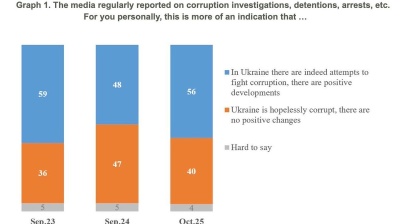Russia does not release information on the numbers of mobilised and recruited men or casualties of war in Ukraine; however, the Bank of Finland institute for Emerging Economies (BOFIT) has dug into public banking records to work out where soldiers are being recruited, as soldiers are paid significantly more than the average national average salary, causing spikes that are easy to identify in the regional banking sector.
“Such regions coincide with the regions with proportionally large numbers of mobilised soldiers. It is plausible that the high salaries and hefty payments promised to contract soldiers, mobilised reservists and their families in the event of serious injury or death show up as spikes in regional bank deposits,’ said Laura Solanko, a BOFIT economist in a paper entitled “Where do Russia’s mobilised soldiers come from? Evidence from bank deposits.”
As many as 190,000 Russian soldiers were reportedly stationed along the Ukrainian border in Belarus and neighbouring Russian regions when Russia launched its invasion of Ukraine on 24 February 2022, according to the OSCE. The ranks were swelled by around 300,000 during a partial mobilisation in September last year, with hundreds of thousands more volunteers having signed up since then.
In a December press conference President Vladimir Putin mentioned that the armed forces had recruited 486,000 new contract solders in 2023, and that 617,000 Russian servicemen were currently in the war zone. Taken together there are at least an estimated 1mn men under arms, and Defence Minister Sergei Shoigu has called for the size of the army to be increased to 1.4mn this year.
“These contract soldiers and mobilised reservists have been promised lucrative up-front payments and regular salaries. Moreover, President Putin in March 2022 signed a decree (Ukaz, 2022) stipulating a RUB3mn ($32,400) payment to soldiers injured on the battlefield and a RUB5mn payment to families in event of death,” says Solanko. “Even if the lump sum payments stipulated by the March 2022 decree were not paid in full, the payout amounts involved would be considerable.”
The amount of money being spent is so huge that it is also showing up in Russia’s macroeconomic statistics: it has had a positive impact on both real incomes and retail sales, which have both risen, but is also fuelling a budget deficit, pushing up inflation and leading the CBR to make several large rate hikes.
Soldiers’ payroll has become a major budget item after military spending overtook social spending for the first time ever last year, and involves huge cash transfers domestically that can be seen in the Central Bank of Russia’s (CBR) reporting on the domestic banking sector.
It has been clear from the start of the war that recruitment has been unevenly distributed across the country. During the mobilisation last year, the authorities targeted poor regions in central and southern Russia, such as Dagestan, but left the large urban centres in European Russia such as Moscow and St Petersburg largely alone in an effort to avoid causing protests in the most protest-prone cities. As a result of this strategy the war in Ukraine remains remote and does not affect their daily lives.
“The burden [has] tended to fall heaviest on poorer regions far from Moscow,” says Solanko. “After the initial days of the invasion, regional officials ceased to publish any information on the numbers of mobilised men (information on Russian military casualties is in principle secret). Even so, the available evidence based on social media posts and probate registry data suggest that poorer regions have suffered disproportionately larger military casualty burdens.”
High salaries
The allure of extremely high salaries that are several times bigger than the national average, and other benefits, has been a major factor in attracting voluntary recruits, especially from relatively poor regions, where salaries are well below the national average.
“The Russian average wage in August 2022 was about RUB62,000 ($666) a month, so the promise of RUB700,000 as an immediate signing bonus for new contract solders represents a chunk of money larger than the national average annual salary,” says Solanko. “Moreover, average wages in the less wealthy regions tend to be significantly lower. In North Caucasus, for example, the average monthly wage in 2022 was just RUB35,000. In the relatively poor Siberian Federal District, it was RUB53,000.”
However, it should be noted that not all the regions in Russia’s interior are poor; many of those regions that are home to significant natural resources, especially but not only oil deposits, can have average wages that are significantly higher than the national average.
The two mega-cities of Moscow and St Petersburg both had incomes that are 51% and 117% more than the average national wage in 2018, with two thirds of the other regions below the national average. In general, the poorest regions are all along Russia’s southern border, with the Republic of Chechnya in last place.
Surprisingly, Moscow was not the richest city in Russia in terms of income, although it ranks in the top five. That honour went to Chukotka, a mining outpost in the extreme Far East and Far North corner of the country. But its average income was driven up by a single man: its former governor and oligarch Roman Abramovich, who paid his income tax there while living there and accounted for a third of the local budget revenue by himself.
The other high scoring regions are all in the wastes of Siberia and Yakutia – the oil and gas producing regions and diamond mines of the Sakha Republic. Although nominal wages in these regions are deceptively high, as they are entirely cut off from the “mainland” and everything has to be flown in, the cost of living is also twice as high.
Deposit rates up in the poorest regions
While the release of official recruitment figures and many other macroeconomic parameters was curtailed at the start of the war, the CBR continues to release monthly banking data, allowing BOFIT to follow monthly trends in total household deposits.
Solanko found a clear break in the overall household bank deposits trend in late 2022, when deposits soared.

0224 Russia Ukraine war bank deposits BOFIT
Household deposits, which started to increase rapidly in October 2022, were supplemented with a large seasonal hike in December. The beginning of this spike in deposits coincides with the first wave of mobilisation, increased public spending and the turnaround of the Russian economy in the third quarter of 2022.
Solanko then drilled down into the regional banking data for a more granular look at the changes. That produced some very large differences: in August 2023, the 12-month change in household deposits varied from 3% in Magadan in Russia’s Far North to 53% in Tuva, one of the country’s poorest regions in central Russia and one of the main recruitment centres.

0224 Russia Ukraine war bank deposits average vs Tuva BOFIT
All in all, about 15 Russian “mobilised” regions demonstrate unusually high rates of growth in household deposits in 2023, almost all of the poor and remote regions. Starting in autumn 2022, the trends in household deposits for these regions vs the rest of the country diverged.
Apart from Krasnodar and Rostov (home base for the Southern Military District), these are all small or very small regions far away from Moscow. Furthermore, the majority of these are among the poorest regions in Russia. As a consequence, the stocks of bank deposits in these regions are very small. Therefore even moderate deposit inflows can generate large relative increases in these regions, Solanko reports.
|
Regions with highest growth in household deposits in August 2023. Deposit growth, 3mma, July 2023, y/y% |
||||
|
Deposit growth, 3mma, July 2023, y/y% |
Deposit growth in August 2023 y/y% |
Share of population below min wage, end-2021,% |
Share of mobilised in Sept 2022,%* |
|
|
Tuva |
51 |
53 |
28 |
1.3 |
|
Nenets AO |
45 |
40 |
9 |
na |
|
Chechenia |
41 |
30 |
20 |
na |
|
Buryatia |
32 |
33 |
20 |
3.7 |
|
Altay Republic |
32 |
36 |
22 |
na |
|
Adygea |
29 |
32 |
12 |
1.1 |
|
Zabaikalsk |
27 |
28 |
19 |
na |
|
Dagestan |
27 |
27 |
15 |
2.6 |
|
Yamalo-Nenets AO |
26 |
26 |
5 |
0.8 |
|
Northern Ossetia |
27 |
28 |
13 |
0.9 |
|
Kalmykia |
26 |
28 |
23 |
2.2 |
|
Khanty-Mansia AO |
28 |
30 |
8 |
1.2 |
|
Krasnodar |
25 |
27 |
10 |
na |
|
Karachevo-Cherkessia |
24 |
24 |
22 |
na |
|
Rostov |
23 |
21 |
12 |
0.8 |
|
source: RosStat, *Savina and Bonch-Osmolovskaya (2022), na indicates data not available. |
||||
For almost all these regions, the annual change in household deposits was above 25% in June-August 2023. Apart from the oil and gas regions, this group consists of poor regions where the share of population living with incomes below the minimum wage is well above the national average of 11%. Most of these regions are non-Slavic in title and have sizable non-Slavic national minorities, reports Solanko.
Attempting to cross-check the banking data with reported deaths, which trigger a large payout, Solanko also found that the limited information on deaths tallied with her list of mobilised regions. Russian outlet Mediazona together with BBC Russian News updates the news-based death toll database weekly. On January 15 the Mediazona database included over 42,000 confirmed military deaths across Russian regions, with the largest numbers of casualties in Sverdlovsk, Rostov, Krasnodar and Moscow Oblast, probably due to larger numbers of volunteers documenting military burials in those regions.

0224 Russia Ukraine war Household bank deposits, on-year growth in August 2023 BOFIT
 Share of mobilised men in a region in the relevant age cohort
Share of mobilised men in a region in the relevant age cohort
Features

BEYOND THE BOSPORUS: Investigators feel collar of former Turkish central bank deputy governor
Regime gangs continue to hustle for gains. Some Erdoganist businessmen among the losers.

Journalist beaten to death in Istanbul as security conditions in Turkey rapidly deteriorate
Publisher, meanwhile, is shot in leg. Reporters regularly experience violence, judicial harassment and media lynching.

Agentic AI becomes South Korea’s next big tech battleground
As countries race to define their roles in the AI era, South Korea's tech giants are now embracing “agentic AI”, a next-generation form of AI that acts autonomously to complete goals, not just respond to commands.

Iran's capital Tehran showcases new "Virgin Mary" Metro station
Tehran's new Maryam metro station honours Virgin Mary with architecture blending Armenian and Iranian design elements in new push by Islamic Republic




